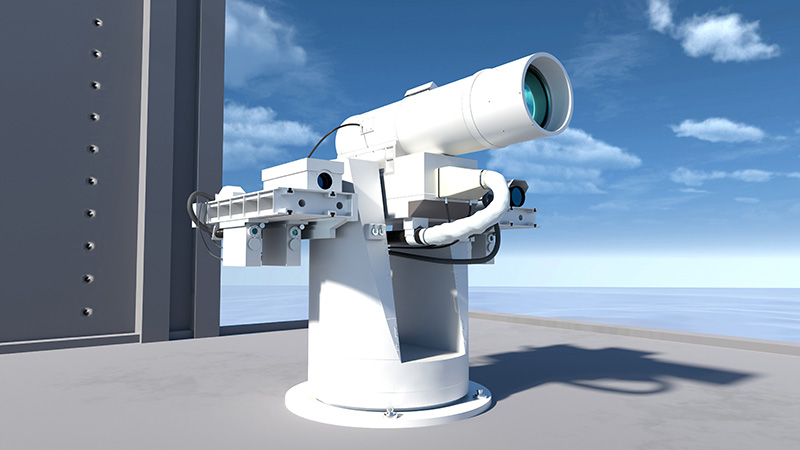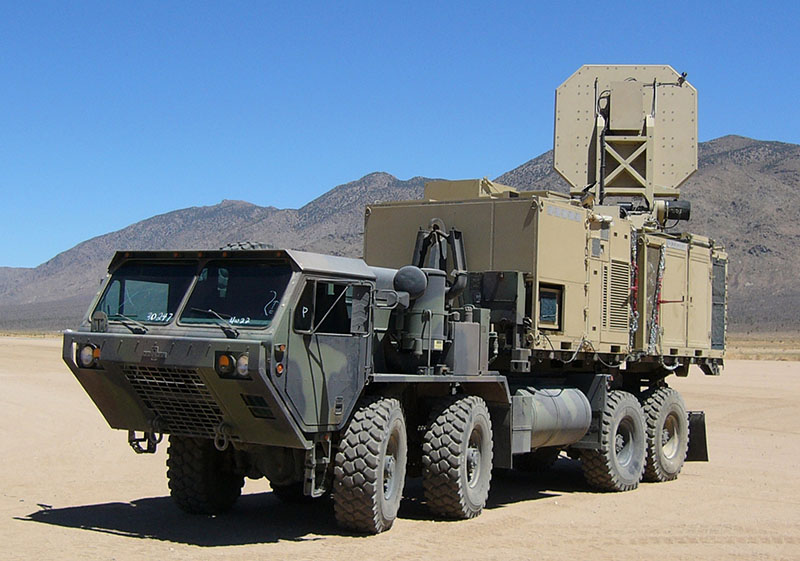Market Connector: Directed Energy Weapons

Is science fiction becoming real life?
Maybe not quite yet, but a new class of ranged weapons, Directed Energy Weapons (DEWs), is beginning to take shape and see usage in military applications.
Directed Energy Weapons come in various forms and have significant potential in both offensive and defensive capacities. These weapon systems can be adapted for various applications and offer near-instantaneous engagement and extremely precise targeting capabilities that many modern conventional weapon systems lack. They have tremendous promise in military applications.
Who Are the Major Developers of Directed Energy Weapons?
DEW research and development has gained significant momentum over the last few decades, with several countries and major defense manufacturers spearheading the development of this technology.
Multiple prime defense firms have developed DEWs in the form of laser or microwave weapons. Lockheed Martin, for example, is developing multiple laser weapon systems for use across land, sea, and air domains. One such system, the HELIOS, is a 60+kW-class laser system designed to be integrated into naval surface ships to provide directed energy capabilities to existing fleets.
Other prime contractors developing DEW technology include RTX with its High Energy Laser (HEL) systems, Boeing with its Compact Laser Weapon System (CLWS), and Northrop Grumman with its 10kW Phantom laser system, among other platforms and firms. The investment in this technology comes as the United States and key allies such as the United Kingdom and Israel see DEW technology as a promising weapon against missiles, drones, and small projectiles such as mortars.
What Is a Directed Energy Weapon?
-15)_in_November_2014_(05).jpg)
Directed Energy Weapons are ranged weapon systems that utilize concentrated electromagnetic energy as opposed to traditional kinetic projectiles. The primary types include HELs, which use focused light to damage or destroy targets; High-Power Microwaves (HPMs), which emit microwave radiation to disrupt electronics; and Particle Beam weapons, which accelerate particles to near-light speeds to inflict damage, though these remain largely experimental.
Where Are Directed Energy Weapons Being Deployed?
_program_is_developing_laser-based,_proof-of-concept_technology.jpg)
While many Direct Energy Weapons systems are still under development or testing, several have reached operational status and are being used in military applications. The U.S. Navy, for instance, has deployed DEWs on several of its surface ships for area defense against drones, missiles, and small boats. The U.S. Army also plans on adding ground-based DEWs to its arsenal to protect ground forces against incoming threats.
One prominent example of DEW technology planned for missile defense on land is the Israeli Iron Beam developed by Rafael. The Iron Beam is a High Energy Laser Weapon System (HELWS) of the 100kW class envisioned as a complement to Israel’s existing Iron Dome missile defense system. With a range of more than six miles, the Iron Beam is designed to precisely target and shoot down incoming rockets and missiles at a cost of no more than a few dollars per “shot.”
Another promising application for DEW technology is non-lethal weapons such as the Active Denial System (ADS), a microwave non-lethal weapon. Seen as a potentially effective system for crowd control and security purposes, the ADS uses millimeter-wave electromagnetic energy at a frequency of 95 GHz to create an intense heating sensation on the surface of the skin. The ADS waves only penetrate a fraction of a millimeter into the skin, causing discomfort without causing permanent damage.

The Active Denial System (ADS).
When Will Directed Energy Weapons Be Used?
DEW systems are beginning to see limited deployment in a handful of militaries and conflict zones throughout the world. In addition to the examples mentioned above, DEWs are being deployed in the form of anti-drone guns in the Russia-Ukraine War. Instead of shooting at enemy drones with conventional weapons, anti-drone guns use radio waves to quietly bring down the drones or force them to retreat, without revealing their position.
Looking ahead, the near-term future will likely see DEWs continually integrated into existing military platforms primarily for defensive purposes. In the long term, there is potential for widespread adoption across all military branches, including the development of space-based systems.
Why Were Directed Energy Weapons Created?
Missile technology and unmanned aerial systems (UAS) have been rapidly advancing, and UAS platforms have begun to see widespread use on battlefields in recent years. Directed energy weapons provide an effective counter to this technology.
Directed Energy Weapons provide warfighters a fast, precise, and cost-effective alternative to traditional kinetic weapons. Because they can engage targets at the speed of light, these systems are ideal for intercepting fast-moving targets. Their high-precision capabilities enable them to minimize collateral damage while providing the capability to neutralize a variety of targets, including electronics, without physical destruction. This technology also doesn’t rely on finite ammunition, unlike conventional weapon systems.
DEWs are sophisticated systems that require complex and substantial power distribution throughout their system architecture, especially as you go higher in kW-class. Incorporating Interconnect systems designed for high power and high voltage power distribution is essential in these revolutionary platforms.
Explore Amphenol Aerospace High Power and High Voltage Solutions.
About Us
Amphenol Aerospace is an industry-leading designer and manufacturer of interconnect products for the military and aerospace markets.
Search for parts through our Technology guide, or visit our Product Configurator to get 3D models of the exact configuration that you are looking for.